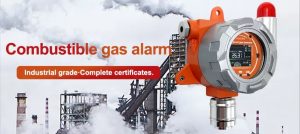Air pollution is a major global concern, with detrimental effects on human health and the environment. In recent years, there has been an increasing focus on monitoring air quality to better understand its impact and implement effective measures. Gas sensors play a crucial role in this process by providing real-time data on various pollutants present in the atmosphere. This article explores the significance of gas sensors in monitoring air quality and their contributions to creating healthier environments.

Understanding Air Pollutants
To effectively monitor air quality, it is essential to identify and measure different pollutants. Gas sensors are designed to detect and quantify various gases, such as nitrogen dioxide (NO2), sulfur dioxide (SO2), carbon monoxide (CO), ozone (O3), and volatile organic compounds (VOCs). By continuously monitoring these gases, we can gain insights into their concentrations, sources, and potential health risks they pose. Gas sensors also play a crucial role in detecting particulate matter (PM), another harmful component of air pollution.
Real-Time Monitoring
Gas sensors provide real-time data on pollutant levels, allowing researchers, policymakers, and individuals to stay informed about the air quality in their surroundings. Real-time monitoring enables quick identification of pollution sources and immediate responses to mitigate risks. For example, if an industrial facility experiences a sudden increase in emissions, gas sensors can alert authorities promptly, enabling them to take necessary actions such as implementing pollution control measures or notifying nearby communities.
Early Warning Systems
Gas sensors can be integrated into early warning systems to provide alerts and forecasts regarding air quality. By tracking pollutant levels and using weather data, these systems can predict air quality conditions in advance. This information helps individuals plan outdoor activities, choose safer routes, and minimize exposure to poor air quality. Additionally, early warning systems can aid in issuing public advisories and implementing emergency response measures during episodes of severe pollution, such as wildfires or industrial accidents.
Indoor Air Quality Monitoring
While outdoor air pollution often receives more attention, indoor air quality is equally important. People spend a significant amount of time indoors, and poor indoor air quality can have severe health consequences. Gas sensors play a vital role in monitoring indoor spaces, such as homes, schools, and workplaces, to ensure healthy environments. They help detect pollutants, such as VOCs from building materials, cleaning products, and cooking activities, as well as gases emitted by appliances, furniture, and tobacco smoke. With this data, individuals can take appropriate measures to improve ventilation, limit pollutant sources, and maintain better indoor air quality.
Citizen Empowerment
Gas sensors offer opportunities for citizen science initiatives, empowering individuals to actively participate in monitoring air quality. With the availability of portable and affordable gas sensors, people can measure and contribute data to larger monitoring networks. This citizen-generated data complements official monitoring efforts, enhances spatial coverage, and enables community-driven actions. By involving citizens in air quality monitoring, awareness is raised, and collective efforts can be made to advocate for cleaner air and support evidence-based decision-making.
Smart Cities and IoT Integration
Advancements in internet of things (IoT) technology have paved the way for integrating gas sensors into smart city frameworks. By deploying gas sensors across cities, data can be collected from multiple locations simultaneously. This comprehensive dataset enables city planners and policymakers to identify pollution hotspots, understand spatial patterns, and implement targeted interventions. IoT integration also allows for automated data collection, remote monitoring, and real-time data sharing, facilitating more efficient and effective air quality management strategies.

Policy and Regulation Support
Gas sensors play a crucial role in setting and evaluating air quality standards, as well as supporting policy and regulatory measures. Accurate and reliable data from these sensors provides the scientific foundation necessary for formulating evidence-based policies. Gas sensors also aid in monitoring compliance with existing regulations, enabling authorities to identify areas of non-compliance and take necessary enforcement actions. Moreover, the availability of long-term gas sensor data helps assess the effectiveness of implemented pollution control measures and guide future policy decisions.
Conclusion
Monitoring air quality is critical for protecting human health, preserving the environment, and creating healthier environments. Gas sensors serve as indispensable tools in this endeavor, providing real-time data on various pol
 : +86 155 8830 2704
: +86 155 8830 2704 : jxdziot@gmail.com
: jxdziot@gmail.com
